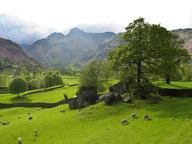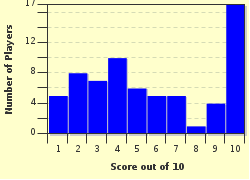Quiz Answer Key and Fun Facts
1. An arÍte may be described as a ridge having very steep sides and a knife-edge like top. Which of the following arÍtes could you transverse on the way to the summit of Blencathra?
2. On which fell top is there a stone slab seat as a memorial to 'Mick Lewis'?
3. The remains of the only wolfram mine to have existed in the Lake District, are to be found on which hill?
4. The waterfall 'Whitewater Dash' along with the alarmingly named 'Dead Crags' and 'Terminal Cliff' may be found on which of the following fells?
5. Which hill is sometimes known as the 'cub of Skiddaw'?
6. The River Glenderamackin almost totally surrounds which of the following fells, that is also famed for some eighteenth century army manoeuvres?
7. Wainwright described the summit of the next venue as being suitable for sport. Separated from Meal Fell by Frozenfell Gill and with a subsidiary summit of Coomb Height, which fell may be ascended alongside Roughton Gill?
8. The southern face of Blencathra consists of alternate ridges and scree slopes. Each of these ridges ends in a fell and may be used as a route to climb Blencathra. Which of the following is not one of these fells?
9. If you stop to catch your breath beside the Hawell Monument, which of these summits could you be ascending?
10. To who, whom or what did Alfred Wainwright dedicate Book 5 of his 'Pictorial Guide to the Lake District'?
Source: Author
paper_aero
This quiz was reviewed by FunTrivia editor
Exit10 before going online.
Any errors found in FunTrivia content are routinely corrected through our feedback system.

